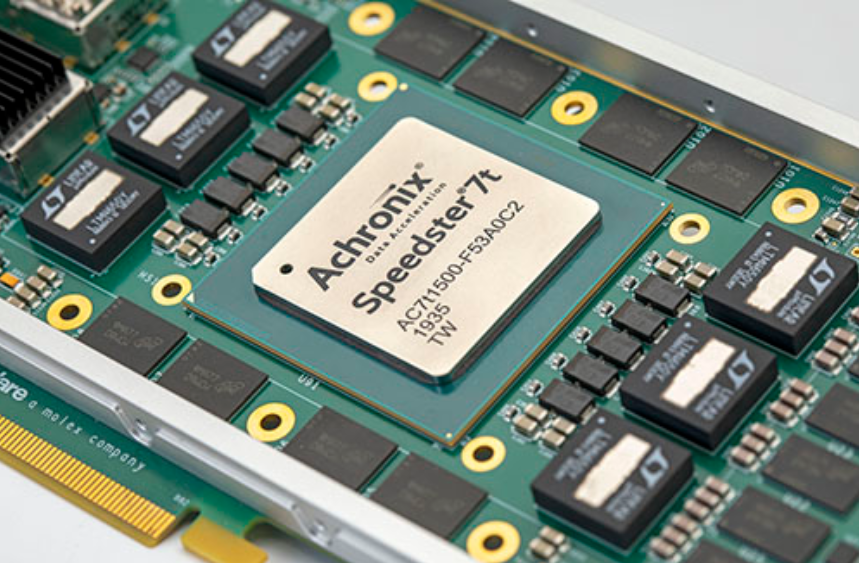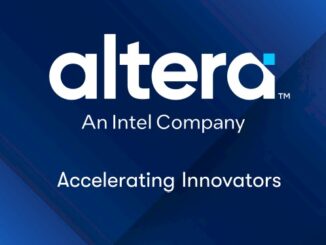
In addition to covering momentum in the FPGA market overall, from the first inklings that compute acceleration could be a large opportunity to recent acquisitions of the two largest FPGA device makers by Intel and AMD, we have kept an eye on FPGA startups. While there haven’t been many, those who entered the market at the beginning of the upward hype cycle all seem to have had interesting paths.
Among those upstarts, Achronix has been the subject of our focus a few times over the years. We were initially interested in their dual-pronged strategy as high-end device makers and grantors of IP licenses and the pedigree of their engineering and management team with its ex-Altera and academic emphasis. As we watched acquisitions and how they could continue to carve a piece of our the market their CEO, Robert Blake, tells us is worth $10 billion, it became clear they were steamrolling ahead with an ambitious 7nm roadmap on the hardware side and more ports to a broader technology span for the IP side.
With a market opportunity like that, it’s not a surprise that Achronix, one of the few independent device makers left standing, looked for options, beginning with a path to their own IPO, one that led to a merger with ACE Convergence and therefore public company status. The news was a bit of a head-scratcher in that it wasn’t clear if they weren’t able to successfully move their own IPO, if they were having trouble securing funding, or if ACE made an offer they simply couldn’t refuse. What actually drove the deal has much to do with timing, as it turns out.
As Blake tells us, “if you go back to Q4 last year, we’d already started down the path of entering the market with a conventional IPO. We started the early stages, talking to investors and at that time, got multiple inquires from different SPACs (special purpose acquisition companies) but still wanted to continue down the traditional IPO route. But the SPAC approach gives us some additional upside.” By upside, Blake says they could conclude the public offering in a shorter timeframe, which meant a faster infusion of capital for more products, tooling, software, and people. Further, the timing, especially for semiconductors, was right. And finally, he says that while they had SPAC options, ACE Convergence had domain expertise in communications and FPGAs.

Achronix claims estimated 2020 revenues of approximately $105 million, 79% gross margins and 35% operating margins with migration to next-generation products driving an estimated revenue CAGR of 20% to 25% from 2020 to 2025.
Business combination with ACE Convergence Acquisition Corp. (Nasdaq: ACEV) positions Achronix to capitalize on non-cancellable backlog in excess of $160 million and over $1.1 billion in identified pipeline opportunities driven by Speedster and Speedcore products
Approximately $2.1 billion estimated post-transaction equity value based on current assumptions with up to $330 million in gross cash proceeds to the company, assuming minimal redemptions
Oversubscribed $150 million fully committed common stock concurrent PIPE financing at $10.00 per share anchored by ACE Equity Partners LLC, funds and accounts managed by BlackRock and Hedosophia; and with participation from other institutional investors
Achronix expected to be listed on Nasdaq under the ticker symbol “ACHX” following an anticipated transaction close by the end of the first half of 2021.
“ACE is public and the stock price since we made the announcement shows good reception. As part of this process, we went down a PIPE (private investment in public entity) route and talked to a number of big institutional investments. As part of that announcement we had an oversubscribed pipeline with $150 million raised (but oversubscribed). That was a strong sign of positive interest in the investment opportunity,” he adds.
We’ve done the math over years on Altera and Xilinx numbers over the years pre-acquisition but with private Achronix, it was always difficult to get a handle on whether revenue was pushing a string or bathing in relatively high margins and which side of their business provided the greatest opportunity—the Speedster devices or the IP licensing. The business model itself depends on both sides, however. And it is here, Blake tells us, where their continuing value lies.
“If you look in our own chips, imagine the core is an eFPGA fabric. So fundamentally, to expedite our own business, we needed to build an FPGA compiler and arbitrary-sized FPGA fabrics quickly for our own chip business. So there’s a natural synergy between the two. We can use the FPGA tech for our own stuff and license it to the outside. It’s been a good fit.”
As Blake explains, “Over time, if you look at the semi or ASIC spaces, they integrated more capability incrementally, starting with memory to high-speed SERDES to DSP blocks then CPUs and ML processors. That integration path has been common. My vision of an embedded FPGA is that why wouldn’t an ASIC or SoC company integrate an FPGA? We knew from early on that it wasn’t if, but when, that was going to make sense. With the latest generation of usage models and broader applications in high end markets this makes sense.” He adds that their dual business model is key to what has made them able to weather the slings and arrows of the industry with the licensing arm of high value out of the gate.
“When you look at the economics of our business, consider this. If we license a small core with a lower license fee and royalty versus a larger core with a higher license fee for manufacture and a higher per-chip royalty per device, these device can be “small” in the order of millions of dollars or “large” in the $10-$20 million range. So economically, the business is interesting. We’re leveraging other companies’ R&D teams to build products that include our technology and we have no manufacturing costs. That makes for a very high-margin business.”
Blake says that their next steps include accelerating their 7nm Speedster rollout with additional R&D investments for more parallel development for additional Speedster products. He says more resources will go toward supporting different technologies from a Speedcore standpoint. “It typically takes 9-12 months to port to a new technology but customers are looking at additional nodes they want to add.” The future includes more products, a broader technology span, and expected increases in sales and technical support channels as well.
No stranger to the semiconductor and FPGA worlds, Blake says watching FPGAs evolve of the last few decades has been a fascinating run. He says five years ago it became clearly apparent that there was great opportunity in compute acceleration, but the network side of the business and edge computing also represent large opportunity.
From our perspective here at TNP, we have to wonder: If AMD was going to buy any FPGA company to counter Intel, the only choice was Xilinx and by the time it happened, the valuations were sky high. If it was really about acquiring FPGA assets in both hardware and IP, Achronix might have made a more balanced, less risky move, but of course, that purchase was about far more than just having an FPGA portfolio. Blake says he was not surprised at either Intel or AMD’s reprogrammable device acquisitions although the valuations were higher than expected.
“Maybe if we fast forwarded another three years it would have been a different outcome,” he says. “But the position it puts us in now as we enter the public market means we can potentially generate up to $330 million of additional capital into the company and we will have a valuation of around $2.1 billion. It’s a validation of what we have had as a strategy and what we’re building. Given the landscape of Intel/Altera and AMD/Xilinx, this present many new opportunities for growth.”





perfect, thanks.